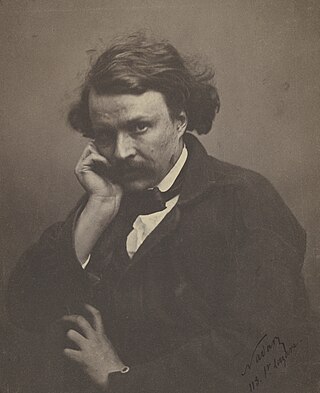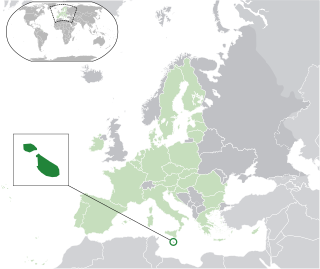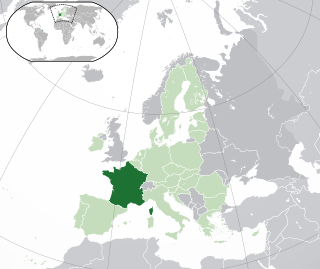Related Research Articles
Sex assignment is the discernment of an infant's sex, usually at birth. Based on an inspection of the baby's external genitalia by a relative, midwife, nurse, or physician, sex is assigned without ambiguity in 99.95% of births. In the remaining cases, additional diagnostic steps are required and sex assignment is deferred. Sex also may be determined prior to birth through prenatal sex discernment.

The history of intersex surgery is intertwined with the development of the specialities of pediatric surgery, pediatric urology, and pediatric endocrinology, with our increasingly refined understanding of sexual differentiation, with the development of political advocacy groups united by a human qualified analysis, and in the last decade by doubts as to efficacy, and controversy over when and even whether some procedures should be performed.

A hermaphrodite is a sexually reproducing organism that produces both male and female gametes. Animal species in which individuals are of different sexes, either male or female but not both, are gonochoric, which is the opposite of hermaphroditic.

Intersex people are individuals born with any of several sex characteristics including chromosome patterns, gonads, or genitals that, according to the Office of the United Nations High Commissioner for Human Rights, "do not fit typical binary notions of male or female bodies".

Hermaphrodite is a series of photographs of a young intersex person, who had a male build and stature and may have been assigned female or self-identified as female, taken by the French photographer Nadar in 1860. Possibly commissioned by Armand Trousseau, the nine photographs have been described as "probably the first medical photo-illustrations of a patient with intersex genitalia". They were originally restricted for scientific uses, and Nadar did not publish them. Further photographs of intersex subjects followed over the next several decades, although there is no evidence that the photographers knew of Nadar's work.
Thomas Hall, born Thomasine Hall was an English intersex person and servant in colonial Virginia whose wearing of female attire and, on subsequent investigation, a liaison with a maid provoked public controversy in 1629. Hall was subjected to a physical inspection, and the case reached the Quarter Court in Jamestown, which ruled that Hall was "both a man and a woman and must dress in male and female clothing simultaneously".

The International Intersex Forum is an annual event organised, then later supported, by the ILGA and ILGA-Europe that and organisations from multiple regions of the world, and it is believed to be the first and only such intersex event.

Intersex, in humans and other animals, describes variations in sex characteristics including chromosomes, gonads, sex hormones, or genitals that, according to the UN Office of the High Commissioner for Human Rights, "do not fit typical binary notions of male or female bodies". Intersex people were historically termed hermaphrodites, "congenital eunuchs", or even congenitally "frigid". Such terms have fallen out of favor, now considered to be misleading and stigmatizing.

The following is a timeline of intersex history.

Intersex rights in New Zealand are protections and rights afforded to intersex people. Protection from discrimination is implied by the Human Rights Act and the Bill of Rights Act, but remains untested. The New Zealand Human Rights Commission states that there has seemingly been a "lack of political will to address issues involved in current practices of genital normalisation on intersex children".

Intersex rights in Australia are protections and rights afforded to intersex people through statutes, regulations, and international human rights treaties, including through the Sex Discrimination Act 1984 (Cth) which makes it unlawful to discriminate against a person based upon that person's intersex status in contexts such as work, education, provision of services, and accommodation.

Intersex people in the United States have some of the same rights as other people, but with significant gaps, particularly in protection from non-consensual cosmetic medical interventions and violence, and protection from discrimination. Actions by intersex civil society organizations aim to eliminate harmful practices, promote social acceptance, and equality. In recent years, intersex activists have also secured some forms of legal recognition. Since April 11, 2022 US Passports give the sex/gender options of male, female and X by self determination.

Intersex rights in Malta since 2015 are among the most progressive in the world. Intersex children in Malta have world-first protections from non-consensual cosmetic medical interventions, following the passing into law of the Gender Identity, Gender Expression and Sex Characteristics Act in 2015. All Maltese intersex persons have protection from discrimination. Individuals who seek it can access simple administrative methods of changing sex assignment, with binary and non-binary forms of identification available.

Intersex people in Germany have legal recognition of their rights to physical integrity and bodily autonomy, with exceptions, but no specific protections from discrimination on the basis of sex characteristics. In response to an inquiry by the German Ethics Council in 2012, the government passed legislation in 2013 designed to classify some intersex infants as a de facto third category. The legislation has been criticized by civil society and human rights organizations as misguided.

Intersex people in the United Kingdom face significant gaps in legal protections, particularly in protection from non-consensual medical interventions, and protection from discrimination. Actions by intersex civil society organisations aim to eliminate unnecessary medical interventions and harmful practices, promote social acceptance, and equality in line with Council of Europe and United Nations demands. Intersex civil society organisations campaign for greater social acceptance, understanding of issues of bodily autonomy, and recognition of the human rights of intersex people.

Intersex people in France face significant gaps in protection from non-consensual medical interventions and protection from discrimination. The birth of Abel Barbin, a nineteenth-century intersex woman, is marked in Intersex Day of Remembrance. Barbin may have been the first intersex person to write a memoir, later published by Michel Foucault.

Intersex people are born with sex characteristics, such as chromosomes, gonads, hormones, or genitals that, according to the UN Office of the High Commissioner for Human Rights, "do not fit the typical definitions for male or female bodies". Such variations may involve genital ambiguity, and combinations of chromosomal genotype and sexual phenotype other than XY-male and XX-female.

Intersex people in Switzerland have no recognition of rights to physical integrity and bodily autonomy, and no specific protections from discrimination on the basis of sex characteristics. In 2012, the Swiss National Advisory Commission on Biomedical Ethics published a report on the medical management of differences of sex development or intersex variations.

The regulations regarding the service of intersex people in the United States Armed Forces are vague and inconsistent due to the broad nature of humans with intersex conditions. The United States Armed Forces as a whole does not officially ban intersex people from service but does exclude many based on the form of their status. Policies regarding all intersex people are not addressed formally although depending on the type of sex variation some intersex people are allowed to serve. The United States military and their requirements for service makes it so they are frequently in a unique predicament when it comes to intersex bodies. With their position of needing to discern between male and female bodies, they are exposed to a broad variety of people, such as those who are intersex whose bodies may not match either classification and are more difficult to make decisions on. This ambiguity leads to confusion regarding military medical, behavioral, and legal laws.
Karl Dürrge was a Prussian intersex man, who had been designated on birth documents as female. After discovering the presence of ambiguous external genitalia, Dürrge assumed a male identity and made a living as a medical specimen. Dürrge's life provides insight into the way that persons with intersex variations were treated under the Prussian Code, which allowed such individuals to choose either male or female sex when they came of age. Together with reports of other intersex persons, who allowed their bodies to be used for medical research, Dürrge's case led to the establishment of guidelines for determining sex. Carrying their medical records with them, these intersex individuals helped develop the exchange of medical knowledge between physicians, leading to the application of serial analysis over time to the medical field.
References
- ↑ Fausto-Sterling, Anne (1993–1994). "The Five Sexes". The Sciences. 33 (2): 20–24. doi:10.1002/j.2326-1951.1993.tb03081.x. ISSN 2326-1951.
- 1 2 3 4 5 6 7 8 Reis, Elizabeth (September 2005). "Impossible Hermaphrodites: Intersex in America, 1620–1960". The Journal of American History. 92 (2): 411–441. doi:10.2307/3659273. JSTOR 3659273.
- 1 2 Barry, William (1847). "Case of Doubtful Sex". The New York Journal of Medicine and Collateral Sciences. 8. Retrieved 12 March 2015.
- ↑ de Bracton, Henry. On the Laws and Customs of England. Vol. 2 (Thorne ed.). p. 32.
- ↑ "Hermaphroditism: Sex Not Identified till Twenty-First Year." Supplement to the British Medical Journal. Published 21 March 1891. Retrieved 13 July 2016.
- ↑ Bloom, Anne (2010). "To Be Real: Sexual Identity Politics in Tort Litigation". North Carolina Law Review. 88. SSRN 1535492.